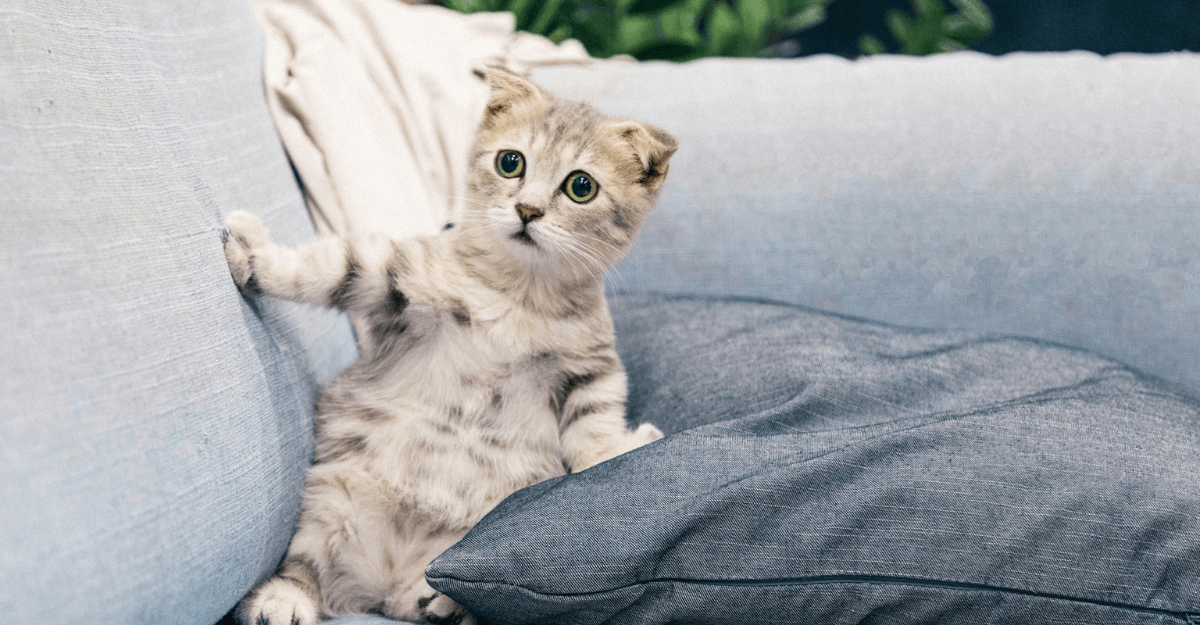As a pet owner, keeping your home free of pet hair can be a daunting task. It’s not uncommon to find pet hair all over your furniture, carpets, and clothes. However, with a few simple tips and tricks, you can maintain a hair-free home and keep your furry friend happy and healthy.
One of the most effective ways to keep pet hair under control is to groom your pet regularly. Brushing your pet’s coat daily can help to remove loose hair and prevent it from ending up on your furniture and floors. Additionally, bathing your pet on a regular basis can reduce shedding and keep their coat healthy and shiny.
Another way to minimize pet hair in your home is to vacuum and dust frequently. Use a vacuum cleaner with a HEPA filter to trap pet hair and dander, and consider investing in a high-quality air purifier to keep the air in your home clean and fresh. By following these simple tips, you can enjoy a hair-free home and a happy, healthy pet.
Understanding Pet Hair and Shedding
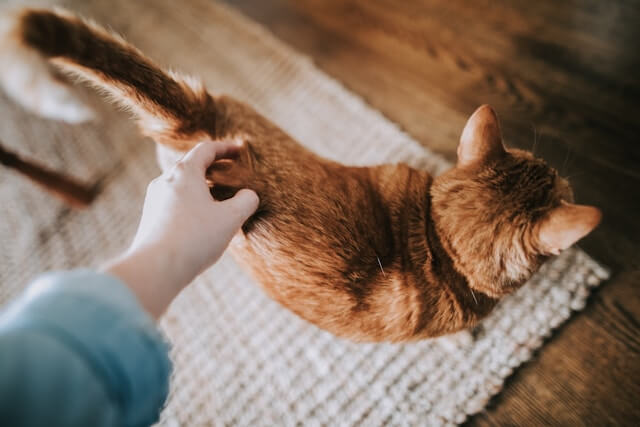
As a pet owner, one of the biggest challenges you might face is dealing with pet hair in your home. Understanding pet hair and shedding can help you manage the problem more effectively.
Types of Pet Hair
Pet hair can be classified into two types: primary and secondary. Primary hair is the longer, coarser hair that grows from the hair follicles in your pet’s skin. It provides insulation and protection from the elements. Secondary hair is the shorter, finer hair that grows in between the primary hairs. It helps regulate body temperature and provides a soft, downy texture to your pet’s coat.
Shedding Patterns and Seasons
All pets shed, but the amount and frequency of shedding vary depending on the breed, age, and health of your pet. Most pets shed more during the spring and fall as they prepare for the changing seasons. During these times, they shed their winter or summer coats to adjust to the temperature variations.
To manage shedding, it is important to brush your pet’s coat regularly, at least once a week. This helps remove loose hair and prevents matting. A balanced diet that is rich in omega-3 fatty acids can also help maintain a healthy coat and reduce shedding.
In conclusion, understanding the type of pet hair and shedding patterns can help you manage pet hair in your home. Regular grooming and a balanced diet can help reduce shedding and keep your pet’s coat healthy and shiny.
Essential Grooming Techniques
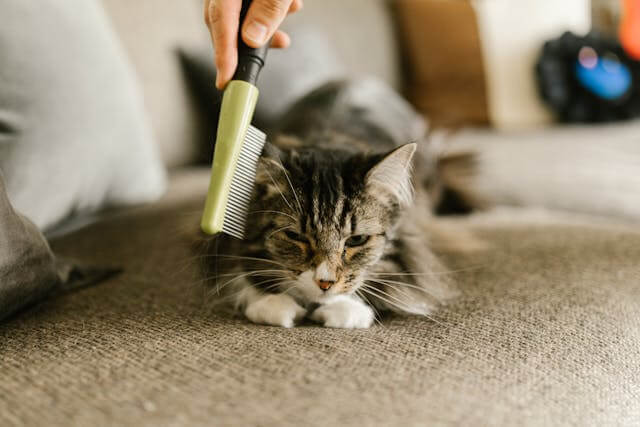
Regular Brushing Routines
As a pet owner, one of the most important grooming techniques is regular brushing. Brushing your pet’s coat helps to remove loose hair, dirt, and debris, which can help to reduce shedding and keep your home hair-free. It also helps to distribute natural oils throughout the coat, keeping it healthy and shiny.
The frequency of brushing depends on your pet’s coat type and length. For example, dogs with long hair may require daily brushing, while those with short hair may only need to be brushed once a week. It’s important to use a brush appropriate for your pet’s coat type to avoid damaging their skin or coat.
Appropriate Grooming Tools
Using the right grooming tools is also essential to keep your pet’s coat healthy and free of mats and tangles. Some of the essential grooming tools include a brush or comb suitable for your pet’s fur type, a pair of dog grooming scissors, nail clippers, and shampoo. A grooming table with a non-slip surface and grooming restraint can also be helpful for a more comfortable and secure experience for both the pet owner and the dog.
When selecting grooming tools, it’s important to consider your pet’s specific needs. For example, dogs with long hair may require a slicker brush, while those with short hair may do well with a bristle brush. Consult with your veterinarian or a professional groomer to determine the best grooming tools for your pet.
Bathing and Coat Health
Bathing your pet is another important grooming technique. It helps to remove dirt and debris from their coat and skin, keeping them clean and healthy. However, it’s important to avoid over-bathing your pet, as this can strip their coat of natural oils, leading to dryness and irritation.
The frequency of bathing depends on your pet’s lifestyle and coat type. Dogs that spend a lot of time outdoors or are particularly active may require more frequent baths than those that are primarily indoor pets. It’s important to use a shampoo formulated for pets, as human shampoos can be too harsh and cause skin irritation.
In summary, regular brushing, appropriate grooming tools, and bathing are essential grooming techniques to keep your pet’s coat healthy and your home hair-free. Consult with your veterinarian or a professional groomer for specific recommendations based on your pet’s needs.
Home Cleaning Strategies
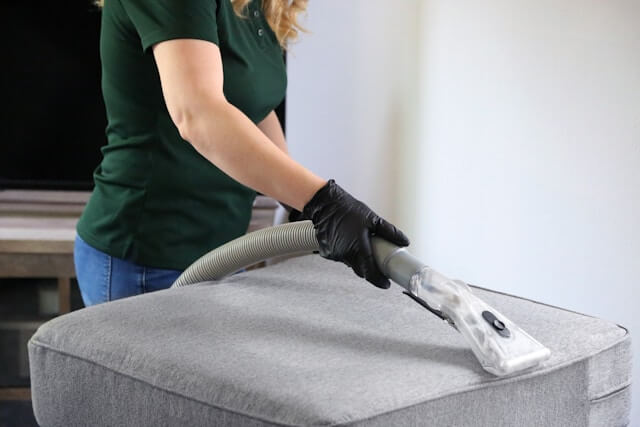
As a pet owner, keeping your home clean and hair-free can be a challenge. However, with the right strategies, it is possible to maintain a clean and healthy living environment for you and your furry friend. Here are some tips on how to keep your home clean and free of pet hair.
Furniture and Upholstery Care
One of the most challenging areas to keep clean is your furniture and upholstery. Pet hair can easily accumulate on your couches, chairs, and other soft furnishings. To keep your furniture hair-free, regular vacuuming is essential. A handheld vacuum or a vacuum with an upholstery attachment can be used to remove pet hair from your furniture.
Another way to protect your furniture is by using protective covers. These covers can be easily removed and washed, making it easier to keep your furniture clean. Additionally, brushing your pet regularly can help reduce shedding and prevent hair from getting stuck to your furniture.
Floor and Carpet Maintenance
Pet hair can also accumulate on your floors and carpets. To keep your floors and carpets hair-free, it is important to vacuum regularly. A vacuum with a powerful suction and a HEPA filter can help remove pet hair from your floors and carpets.
Hardwood, tile, and laminate floors are easier to clean than carpets. However, if you have carpets, you can use a carpet cleaner to remove pet hair and other debris. Additionally, sweeping your floors regularly can help prevent hair from accumulating.
Air Filtration and Purification
Pet hair and dander can also affect the air quality in your home. To keep your home’s air clean and fresh, you can use air filters and purifiers. These devices can help remove pet hair, dander, and other allergens from the air.
When choosing an air filter or purifier, look for one with a HEPA filter. This type of filter can capture small particles, including pet hair and dander. Additionally, changing your air filter regularly can help keep your home’s air clean and healthy.
By following these home cleaning strategies, you can keep your home clean and hair-free. Remember to vacuum regularly, use protective covers, and invest in air filters and purifiers to maintain a healthy living environment for you and your pet.
Prevention and Long-Term Solutions
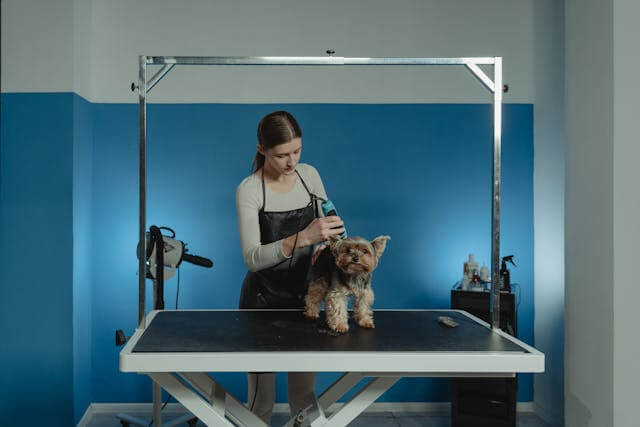
Diet and Nutrition for Healthy Coats
One of the most effective ways to prevent excessive shedding is to ensure that your pet is getting a healthy diet. Feeding your pet a well-balanced diet with essential vitamins and minerals can help improve their coat’s health, reducing shedding. Additionally, adding supplements like omega-3 fatty acids to their diet can also help keep their coat shiny and healthy.
Professional Grooming Services
Regular grooming of your pet can significantly reduce shedding. Professional grooming services like bathing, brushing, and trimming can help remove loose hair and prevent matting. Additionally, regular grooming can help detect any skin conditions or parasites that may be causing excessive shedding.
Choosing Pet-Friendly Home Decor
Choosing the right home decor can also help prevent pet hair accumulation. Opting for furniture and fabrics that are resistant to pet hair accumulation can make cleaning easier. Materials like leather or microfiber are great options for pet owners. Additionally, choosing darker colors for furniture and fabrics can help conceal pet hair.
In conclusion, preventing pet hair accumulation in your home requires a combination of preventive measures and long-term solutions. By ensuring your pet’s healthy diet, regular grooming, and choosing pet-friendly home decor, you can maintain a hair-free home.
Conclusion
Achieving a hair-free home as a pet owner is an ongoing but rewarding process. By incorporating regular grooming, strategic cleaning routines, and the right tools, you can minimize pet hair and enjoy a cleaner living space. Remember, consistency is key! Make these practices a part of your daily life, and soon you’ll find that pet hair is no longer a dominant feature of your home.
Don’t be discouraged by the occasional tumbleweed of fur—it’s all part of sharing your life with a furry friend. Embrace the love and companionship they bring, and with a little effort, you can strike a balance between pet ownership and a tidy home. So go ahead, cuddle up with your furry companion on the couch, and rest easy knowing you’ve got the tools and knowledge to keep your home looking and feeling its best.

